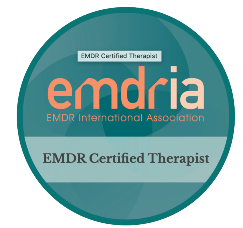How a PTSD Treatment Plan Can Help You Find Relief
When struggling with PTSD, it can be tremendously challenging. PTSD can impact your well-being and the well-being of the people around you and your relationships with them. The good news is that the right PTSD treatment plan goals and objectives can lead to relief and healing from the weight of the impact of trauma — and the resulting PTSD.
If you’ve experienced a traumatic event, your nervous system can struggle to reclaim the balance and equilibrium it lost to the chaos and disruption that the trauma evoked. As a result, it is natural to feel a state of hypervigilance, anxiety, or depression. Cognitively, your brain is working hard to make sense of the events and reclaim safety and predictability.
This process is what can cause you to experience flashbacks, nightmares, or intrusive thoughts that interfere with daily functioning. By addressing these issues with a clear PTSD treatment plan, you can open the door for healing and peace.
Ready for relief?
What Does a PTSD Treatment Plan Look Like?
Treatment plans for PTSD vary widely by therapist and therapeutic approach. However, there are some common guidelines that most practitioners follow when determining how to work with PTSD. These include:
1 – Stabilization
Initially, the therapist will teach you some strategies for stabilization, a process for helping you feel safe before you start exploring your trauma. By enhancing coping skills first, you can manage therapy sessions more effectively and as a result, get more out of PTSD therapy. This also helps you manage better in between therapy sessions.
Many forms of therapy can enhance stabilization, including Cognitive Behavioral Therapy (CBT), Dialectical Behavior Therapy (DBT), Trauma-Focused Cognitive Behavioral Therapy (TF-CBT), Eye Movement Desensitization and Reprocessing (EMDR Therapy), interventions such as Resource Development Installation (RDI), and many more.
2 – Working Through the Trauma
This is the time frame when you will actually be working through the trauma that occurred, using any variety of therapeutic approaches. This is when the trauma is resolved and an internal equilibrium is restored. Many of the same therapies mentioned above are used with trauma. EMDR therapy is an evidence-based therapy that specifically addresses the root of PTSD for healing.
3 – Applying the Adjustments to Your Life
At this juncture of the therapy, there is a focus on how the new skills will be applied to day-to-day life. Any residual anxiety about the future is addressed so you can cope with the trauma healthily and start leading a happier and more productive life.
Applying EMDR to PTSD Treatment Plan Goals and Objectives
EMDR fits into the three phases of work listed above. In each phase, we are working to maximize the therapy’s effectiveness.
Get help today
EMDR for PTSD Phase 1
When working with PTSD, we initially spend time in the stabilization phase, making sure that you have the resources and skills to ground yourself in the present. We also use this time to build the therapeutic relationship, understand your history, and teach you about trauma and EMDR therapy so you feel comfortable moving forward.
EMDR for PTSD Phase 2
EMDR therapy begins in the second phase of the work, addressing the trauma and using bilateral stimulation to eliminate the distress you presently associate with the memory. This process can take several sessions or more, depending on the extent of the trauma. We continue in this phase of work to address all of the experiences related to the trauma before moving into the final phase of the therapy.
EMDR for PTSD Phase 3
In the third phase of the therapy, we are continuing with the EMDR, however we are focusing on residual anxiety related to the future. We address upcoming events or worries you may have about encountering reminders of your trauma. Our PTSD treatment plan goals and objectives are now to eliminate the triggers and anxiety and strengthen the positive thoughts, behaviors, and responses that you developed through therapy.
An Example of PTSD Treatment Utilizing EMDR Therapy
Consider hypothetical client Melissa and her phased PTSD treatment plan using EMDR. Melissa sought counseling for PTSD stemming from an automobile accident. She spent a month in the hospital recovering after the accident, followed by flashbacks, nightmares, and anxiety at the thought of driving.
When Melissa started counseling, she and her therapist first worked to manage her emotions and anxiety and build the tools to implement when it crept up. She learned a containment exercise and other tools to help her feel present, safe, and calm.
She also spent time learning about how she managed challenges and stressors in the past and how trauma and EMDR therapy work. This phase helped her feel more in control of her day-to-day function and more comfortable with her therapist.
The second phase of the therapy began after a few weeks. During this phase of the work, Melissa’s therapist began EMDR therapy. They identified accident-related memories they needed to address, and her therapist began EMDR therapy.
Working through the memories took five sessions. Throughout that time, Melissa noticed a steady improvement in the way she felt, and the traumatic memories lessened until they no longer caused a disturbance. Her flashbacks stopped, and the nightmares were less frequent.
Melissa and her therapist then began to work on how the tools that worked for her memories could be applied to her nightmares. They continued EMDR therapy to address them.
Within a couple of sessions, these nightmares resolved. Melissa and her therapist focused on her concerns about driving next.
Her therapist applied EMDR to imagined situations in the future that were creating her anxiety around driving. Several of Melissa’s sessions focused on this, including some time in between sessions when she would drive short distances and then report back to her therapist about any disturbance she was feeling.
After several weeks, Melissa felt she was able to resume driving without anxiety and they terminated the therapy sessions.
Tailoring Treatment Plan Goals & Objectives to the Client
One specific request Melissa had was that she also wanted to continue talk therapy while she received EMDR therapy. She and her therapist spent time at the end of certain sessions talking through Melissa’s challenges.
After successfully addressing a memory using EMDR, they would also take one or two sessions for talk therapy. This helped Melissa continue to feel a strong therapeutic relationship with her therapist, and she also found it helpful to talk through how she was applying the progress to her life.
In this way, EMDR therapy is not all or nothing. Often, both therapists and clients alike find it helpful to integrate talk therapy and EMDR therapy to foster broad change and heal wounds that are more relational.
EMDR therapists will consider the unique needs of each client and integrate the pacing and sequencing of the work into a PTSD treatment plan that will be most helpful for the client. The number of sessions and structure of the sessions vary widely depending on the extent of the trauma from more recent events and past events.
How To Find a PTSD Therapist & Resources for the Right Treatment Plan
Look online for mental health professionals that specialize in the treatment of trauma and PTSD. Those who specialize in PTSD will also be able to provide you with local resources or referrals.
Talk with your primary care doctors. Most physicians have therapists to whom they refer their patients who may be struggling with the symptoms of PTSD. They will also have insights to share about PTSD and will provide you with resources for help.
How Greenwood Counseling Center Can Help
Effective PTSD treatment plan goals and objectives can take time to achieve, and working through traumatic memories can be challenging. However, the best news of all is that PTSD is highly treatable with evidence-based therapies that can heal the roots of the trauma and ultimately help people learn to thrive.
If you have concerns about PTSD, help can start now. Led by a seasoned EMDR International Association Approved trainer, our therapists at Greenwood Counseling Center specialize in crafting PTSD treatment plan goals and objectives using EMDR therapy techniques. We understand PTSD, know how to provide effective treatment with EMDR, and care about helping you feel your best.
Get in touch today and we’ll help match you with the right therapist for the PTSD treatment you need.
FAQs
How do your therapists write a PTSD treatment plan?
Our team includes best-in-class EMDR Therapists. Many of our therapists were hand-selected from our founder’s EMDR training for their clinical expertise. They understand PTSD and how to provide the best treatment. Our treatment planning for PTSD tends to follow certain considerations and steps to ensure effective treatment based on the evidence-based method of EMDR therapy.
Our team also knows that the urgency is there to relieve the symptoms, but that diving into the trauma too quickly can be counterproductive. We provide a paced building of resources and a treatment plan and timeline unique to each individual and their circumstances. We want you to feel better and to build resources effectively to maximize the benefits of the EMDR therapy work so you can get back to feeling happy, healthy, and productive.
Do the EMDR Therapists at Greenwood Counseling Center also provide standard talk therapy?
Many people ask if doing EMDR therapy means there is no talk therapy component and the answer is no. We also enjoy talk therapy and believe it is essential to building a trusting therapeutic relationship. Throughout the work together we will integrate both EMDR therapy and standard talk therapy so that you get the benefits of both for the most effective PTSD treatment plan, goals, and objectives.
Help for your PTSD is here.





